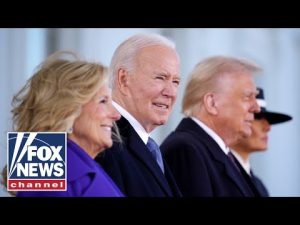In the aftermath of a tragic shooting at Florida State University, President Trump made a notable statement regarding the Second Amendment, which struck a chord amidst the chaos. While victims were being rushed to hospitals and students sheltered in fear, the grim cycle of calls for stricter gun control began anew. However, unlike many of his predecessors, Trump stood firm in his belief that the remedy lies not in restricting the rights of law-abiding citizens, but in addressing the deeper issues that lead to such heinous acts.
The recent incident involved a shooter identified as the son of a sheriff’s deputy, raising questions about mental health and access to firearms. With reports of multiple gunshot victims—six of whom were hospitalized, and one in critical condition—the first instinct for many was to pound the proverbial drum for stricter gun laws. Unfortunately, this reaction is all too common after tragedies, despite the fact that such measures have shown minimal effectiveness over the past decade. It’s worth noting that the underlying issue often isn’t the firearm itself, but the individual wielding it.
Trump’s response was refreshingly direct. He labeled the event “horrifying” but reinforced his commitment to the Second Amendment, asserting that it is ultimately people who commit these acts, not the guns. This perspective is essential in a time when the Left often sides with emotional reactions over logical discourse. By protecting the rights enshrined in the Constitution, Trump is not only defending personal liberties but also preventing the knee-jerk reactions that typically follow mass shootings.
One might wonder how the president’s stance affects his broader agenda. The truth is that his administration serves a dual purpose: promoting conservative values while simultaneously acting as a bulwark against the Left’s excesses. The failure to instigate discussions on sweeping gun bans post-tragedy illustrates how significant Trump’s influence has been in steering the narrative away from impractical, reactionary solutions that fail to address the roots of gun violence.
As this tragic story unfolds, it’s crucial to shift focus from knee-jerk calls for gun control to a more thoughtful approach. The nation must grapple with mental health issues and the societal conditions that lead individuals to such desperate acts. After all, why focus solely on the tools of violence when the real challenge lies in preventing individuals from resorting to such measures?
Moving forward, the citizens of this nation must engage in constructive dialogue on these topics, armed not only with opinions but with facts and verifiable evidence. The Second Amendment is more than just a guarantee for gun ownership; it stands as a testament to personal freedoms and individual responsibility. Only through this lens can America hope to find meaningful solutions to the difficult issues surrounding gun violence.







